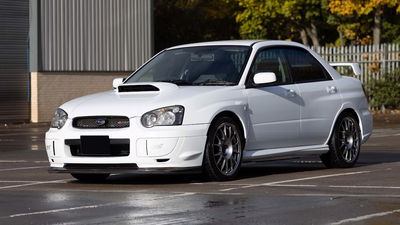Bow Down To The E28 M5; Performance Cars Would Be Nothing Without It
Hands up: who remembers the C6 Audi S6? That’s the one that had the 5.2-litre V10 engine. The 5.2-litre V10 engine, that is, that went on to power the contemporary Lamborghini Gallardo.
Supercar engines don’t often end up under the bonnets of four-door saloons, and when they do, it’s A Good Thing. But the S6 wasn’t the first to pull of such a trick. No, for that we have to look far further back in time, and hop down the road from Ingolstadt to Munich, and Audi’s arch-rival BMW.
You see, back in 1985, BMW had been producing the M535i super saloon in both E12 and E28 forms for six years, and had had plenty of success with both. Powered by a 218bhp 3.5-litre version of the M30 engine, a development of the venerable ‘Senior Six’ M06 powerplant, these were seriously quick cars in their time, the E12 version hitting 60mph in just 7.1 seconds.
But then a group from BMW’s competition department – later to become the M Division – hit upon an idea. The M1 supercar had been retired from service, and its ballistic M88 engine had found a home in BMW’s new flagship, the M635CSi. But with its cutting-edge technology, there was still a huge amount of life left in the M88 – so, the BMW bods wondered, what if it could be installed in the 5 Series too?
It was a brazen idea. While fast four-door saloons had existed before then, what BMW’s engineers were proposing was an entirely different kettle of fish. Rather than a luxuriant colossus with a whopping engine up front, the new fast 5 would be taut and efficient, with an emphasis firmly on driver enjoyment. Oh, and it’d be bloomin’ quick, too. It would, in other words, be as close to a four-door M1 as it was possible to get. And as such, it’d be christened simply ‘M5’.

The M5 made its debut amid… well, you’d think a storm of flashbulbs and fireworks, wouldn’t you? In fact, no – despite having received extremely positive feedback from the 25 VIPs to whom it’d offered pre-production prototypes, BMW was still not certain that the M5 would actually sell. So it was that arguably the most influential performance saloon car ever made emerged with curiously little fanfare at the Amsterdam Motor Show – one of the smaller motor shows on the world stage – in 1985. And it hardly shouted about its performance potential, either – cosmetic changes amounted to little more than a boot spoiler and an extra lip to the front valance. You could order an M Technik cosmetic upgrade if you wanted, but the standard M5 was a remarkably subtle thing – a true Q car, and indeed, one of the first.
Under the bonnet, however, was an upgraded version of the M88, now known as the M88/3 – the second generation had been a motorsport derivative – which benefited from the addition of Bosch ML-Jetronic fuel injection in place of the original Kugelfischer system. This tweak allowed the engine to run a higher compression ratio, which gave it a power boost to 286bhp from the original’s 277; US-spec cars, however, got a slightly strangled version, fitted with catalytic converters and known as the S38, which produced 256bhp. But in full-fat Euro-spec form, the M5 could hit 60mph in just 6.3 seconds, before going on to top out at 147mph.
BMW might have been reticent, but the world’s press was in awe. Rave reviews greeted the M5 when critics first got their hands on it, and the new car instantly became the stuff of legend. Mind you, that was in part because of its hefty price tag - £31,300, to be precise, or just over £81,000 adjusted for inflation, making it even more expensive than its modern-day progeny.
But if you were willing to pay the price, what a tremendous car you ended up with. Where the M535i had been loose and tail-happy, the M5 was controlled and precise, with huge levels of grip and a predictable, progressive transition to oversteer on the limit. It was nimble enough to place perfectly on the road, or fantastic fun to pitch into – and hold – some pretty lurid slides. And providing the punch throughout was that sensational engine – the effervescent M88 tearing its way through the rev range with a raw, metallic rasp that screamed in no uncertain terms of its competition upbringing.
It was, in short, a masterpiece – and there was nothing else quite like it at the time. Oh sure, super saloons were nothing new when the M5 first appeared – but this one was a step beyond even those. This was nothing less than the first hyper saloon. And look at what followed. A long line of sublime, supreme M5s that have only become faster and more astonishing with each new iteration. A host of rivals, from Audi in the form of the RS6; Mercedes in the form of the AMG E-Classes; even from GM at one time, with the lairy Lotus Carlton. Their manufacturers might not like to admit it, but all can credit their existence to the E28 M5. And that’s why it’s one of the most important models in performance car history.













Comments
No comments found.